26. On the road again...Today we take a ride to the so called “Dead Cities”
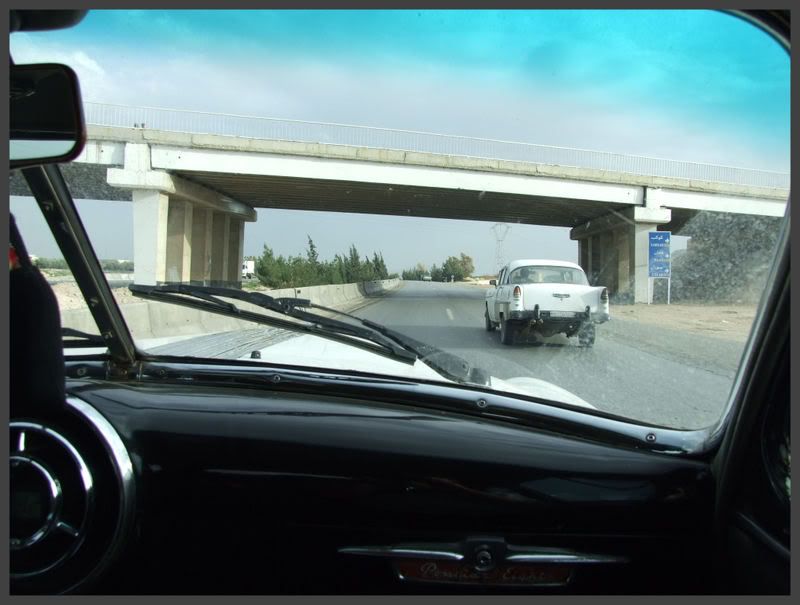
Quote:
The Dead Cities are a group of 700 abandoned settlements in northwest Syria. They date back to before the fifth century B.C and contain many remains of Christian Byzantine architecture. Important dead cities include Qal'at Sim'an, Serjilla and al Bara.
Chris Wickham argues that these were settlements of prosperous peasants which have few or no specifically urban features. The impressive remains of domestic architecture are the result of the prosperity of peasants who benefited from a strong international trade in olive oil at the end of Antiquity.
The other arguments are that these were prosperous cities that flourished as they were located along major trade routes in the Byzantine Empire, and not merely prosperous peasant settlements. When the area was conquered by the Arabs, the trade routes changed and these towns lost the majority of the business that their economies depended on.
(Wikipedia)
|
27
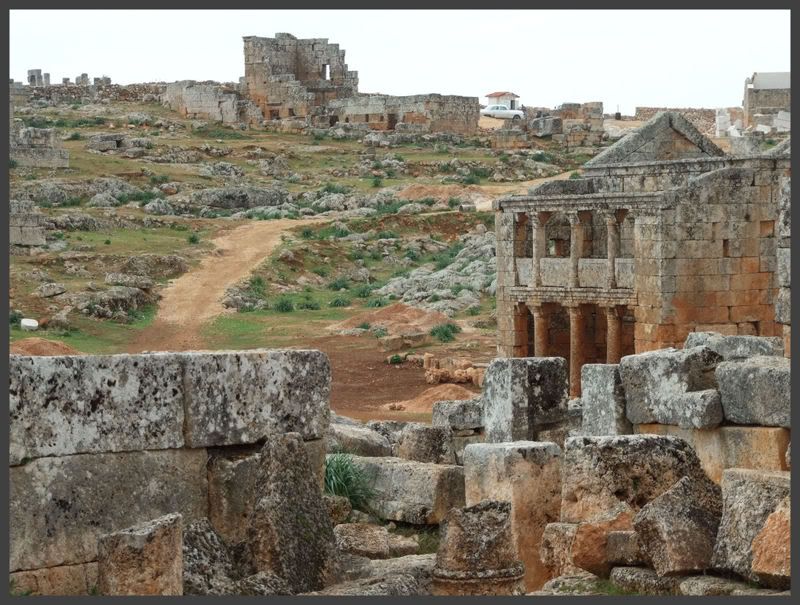
28.

29.
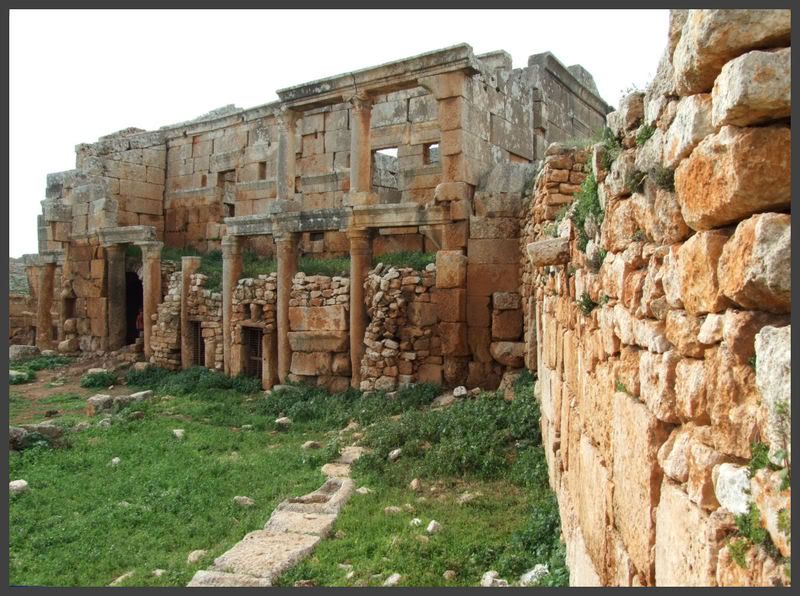
30..
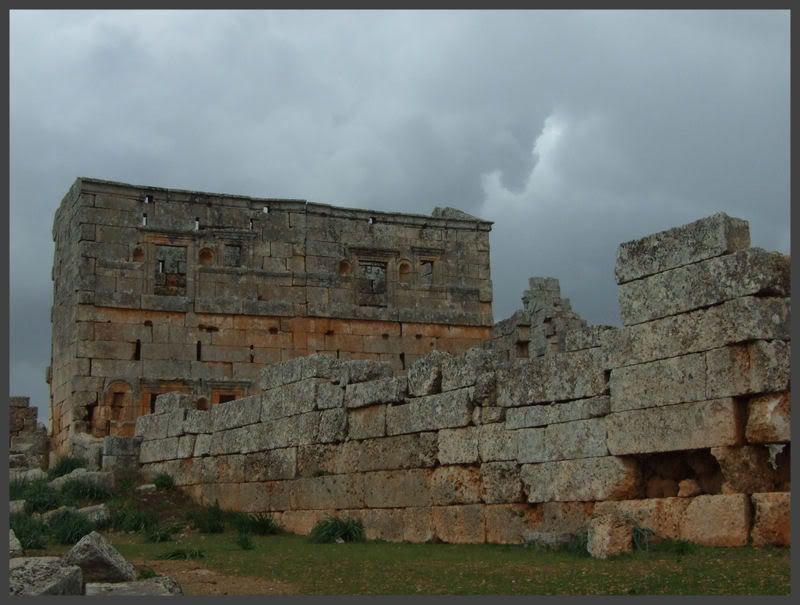
31..
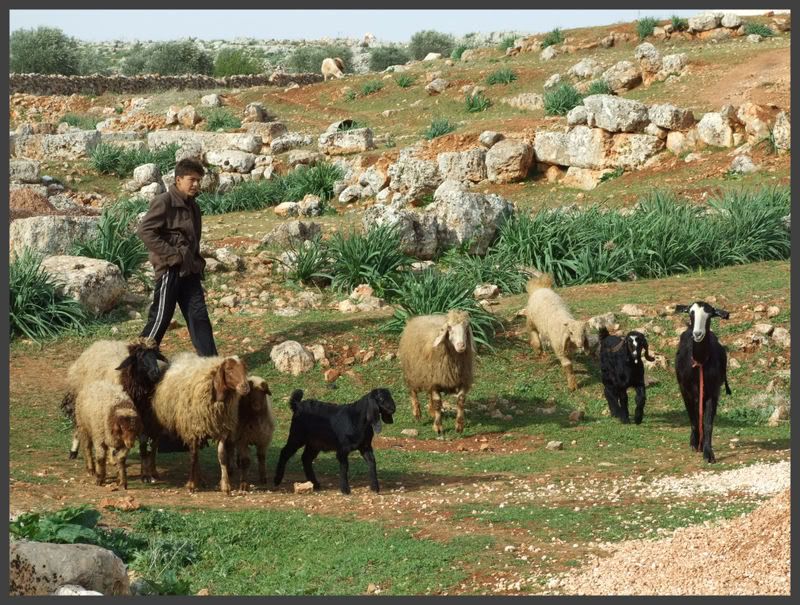
32.
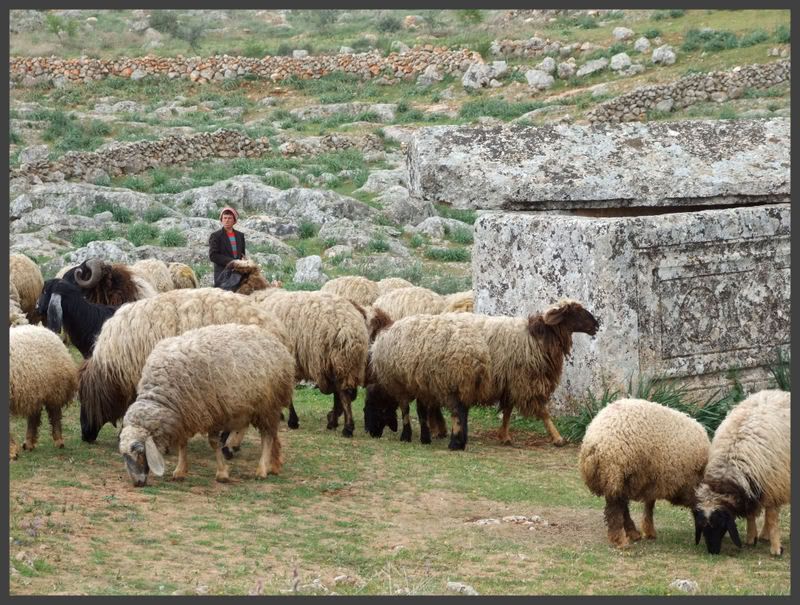
33. We drive further north. The rocky landscape reminds us of the Irish
Burren.

34. We stop at
Qasr Mushabbak, a 5th century basilica.
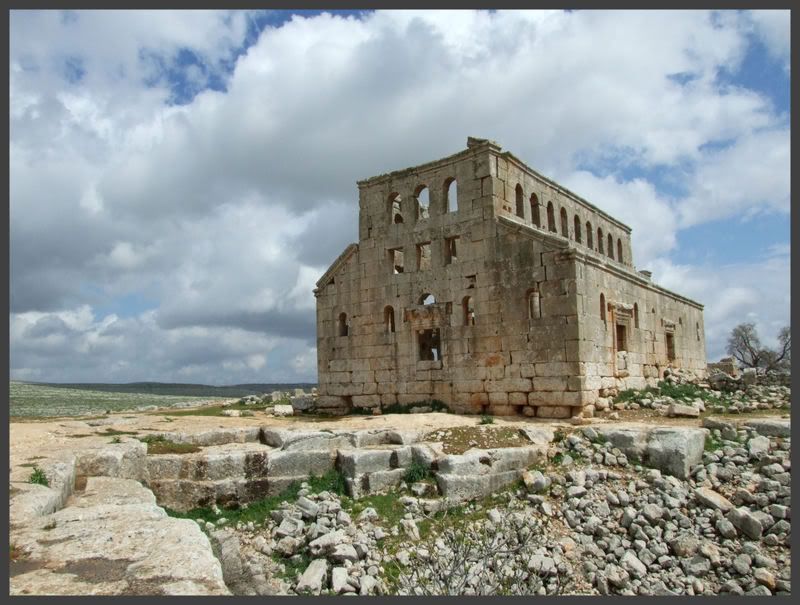
35. The church was a stop for pilgrims on their way to the church of Saint-Simeon.
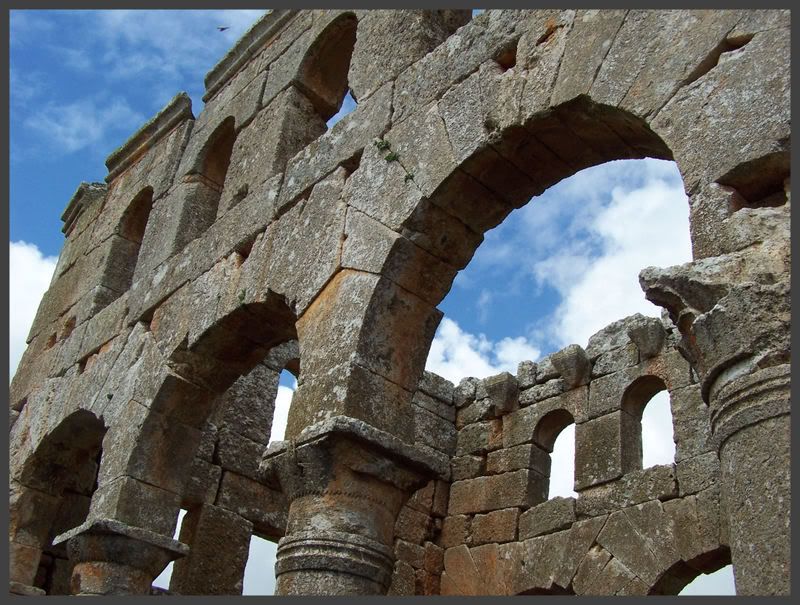
36.
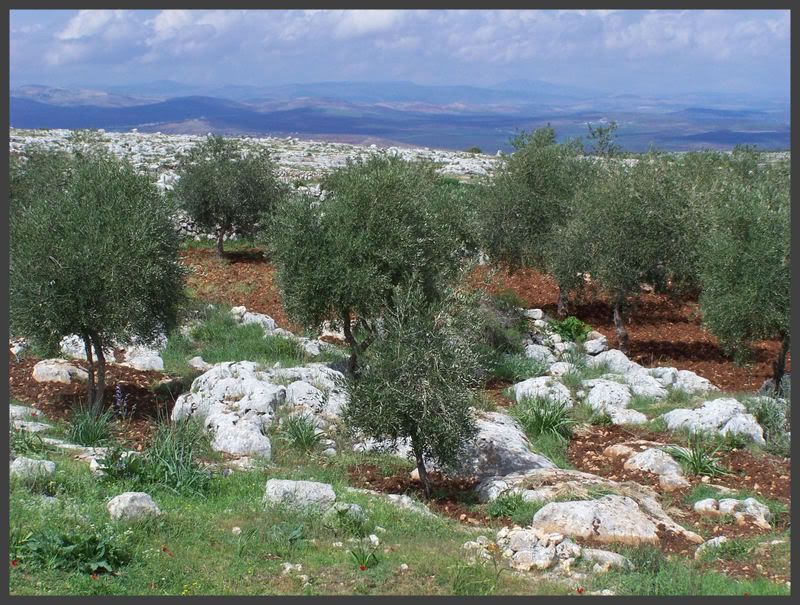
37. Most pilgrims stayed at one of the Inns in Deir Semaan where there were souvenirs shops as well....a 1000 years ago!
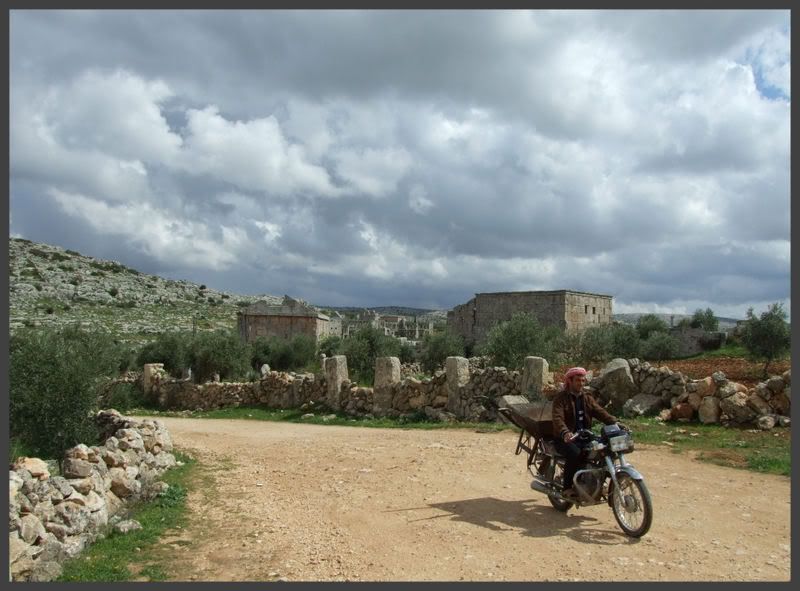
38.
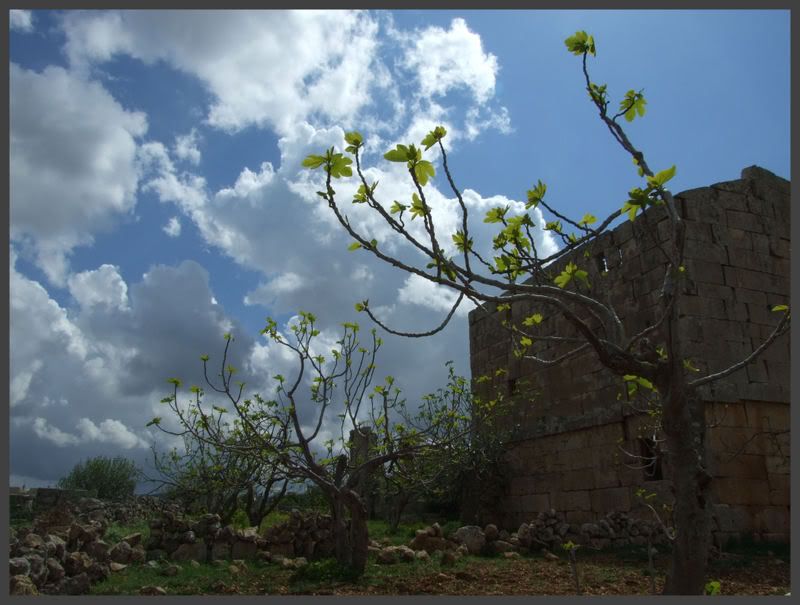
39.
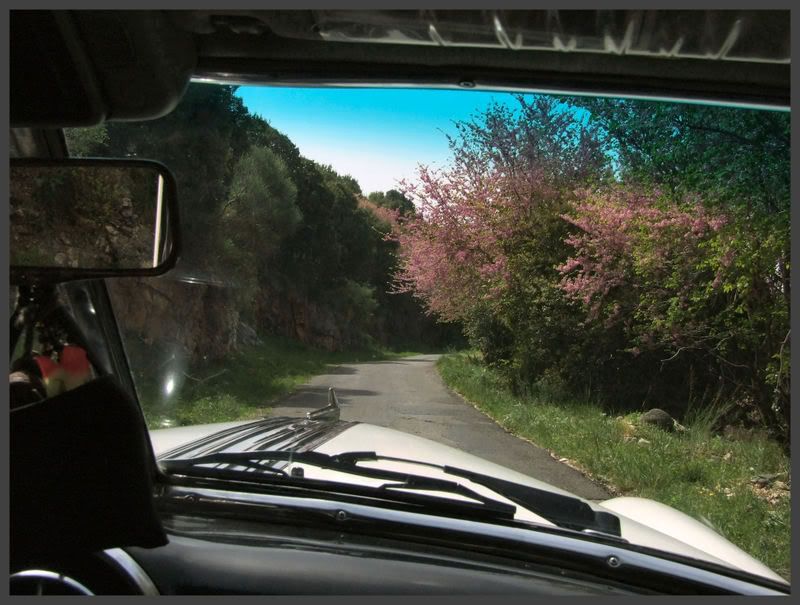
Quote:
Saint Simeon Stylites or Symeon the Stylite (c. 390 – 459) was an Arab Christian ascetic saint who achieved fame because he lived for 37 years on a small platform on top of a pillar in Syria.
(Wikipedia)
|
40. Non-christians could be baptisted in this chapel first.

41. Like this ones?…
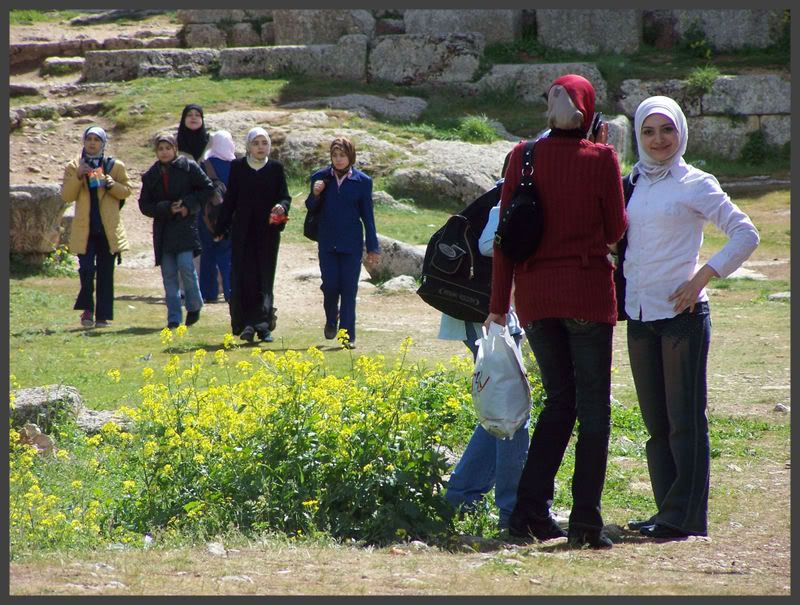
42. The church itselfs.
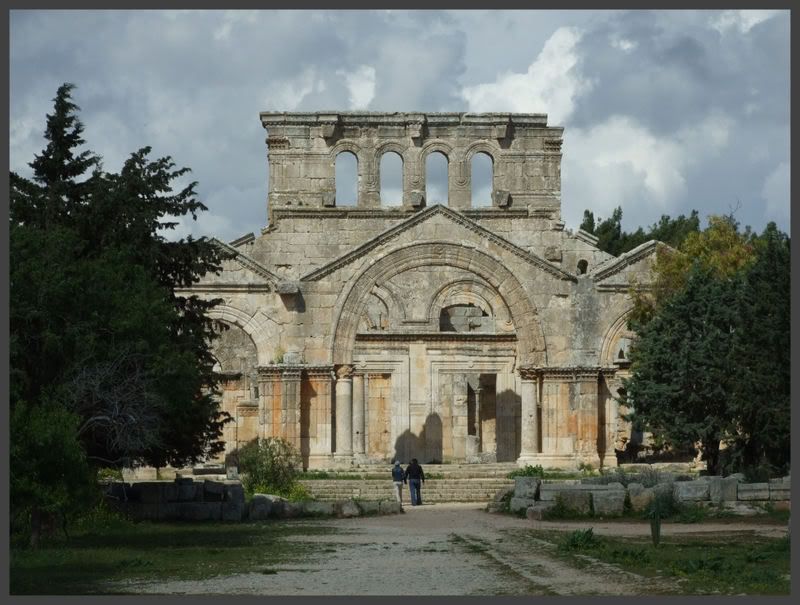
43. This is what remains of the 18 meter high pillar… But he had nice views!
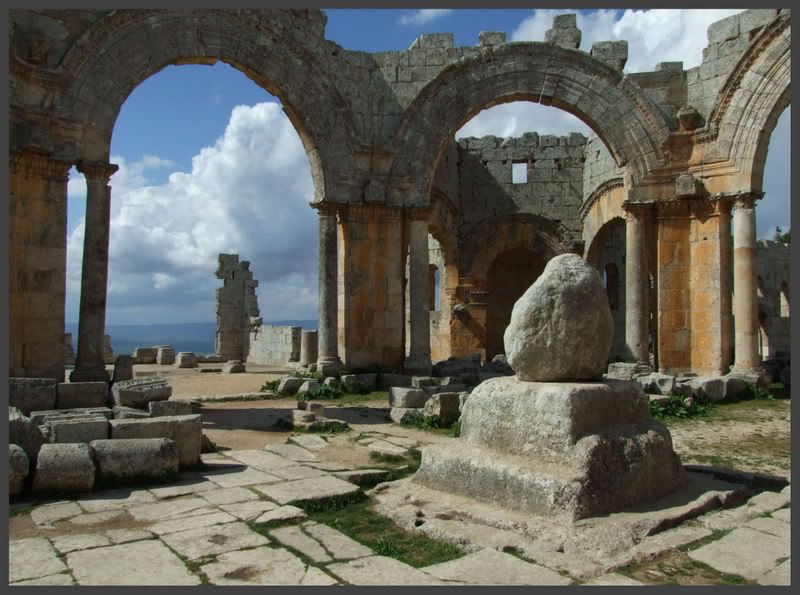
44. We take another ride 20 km to the north east, near the Turkish border.
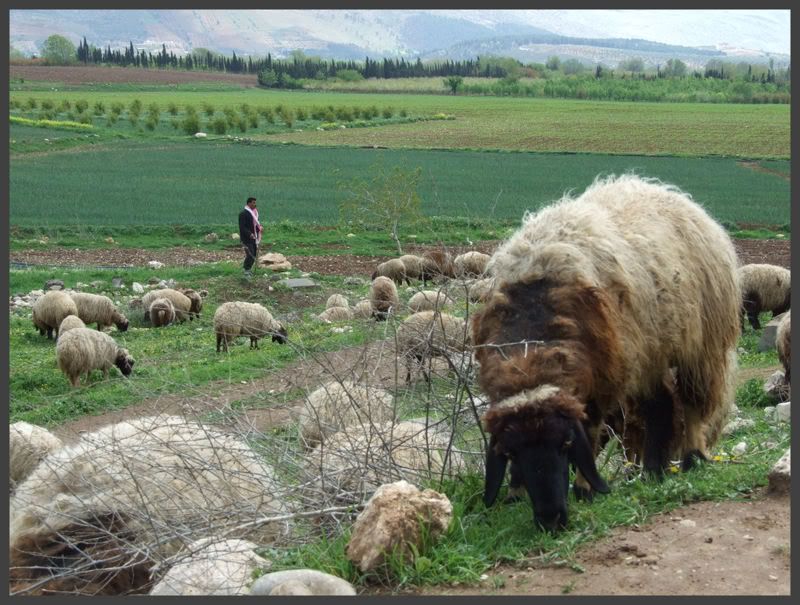
45. ... and reach the remains of the temple of
Ayn Dara
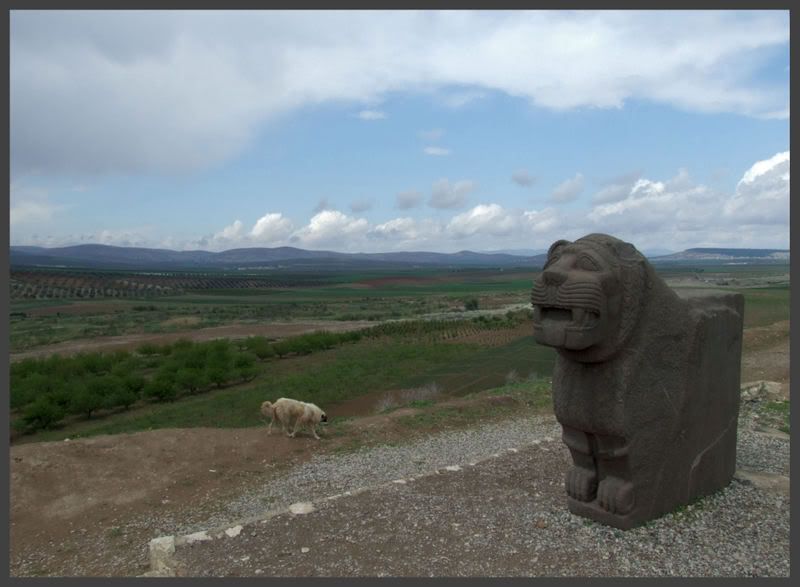
It was built by the Hittitites, some 3000 years ago!
Quote:
|
The Hittites were an ancient Anatolian people who spoke a language of the Anatolian branch of the Indo-European language family, and established a kingdom centered at Hattusa (Hittite URUḪattuša) in north-central Anatolia ca. the 18th century BC. The Hittite empire reached its height ca. the 14th century BCE, encompassing a large part of Anatolia, north-western Syria about as far south as the mouth of the Litani River (a territory known as Amqu), and eastward into upper Mesopotamia. After ca. 1180 BCE, the empire disintegrated into several independent "Neo-Hittite" city-states, some surviving until as late as the 8th century BC. (wikipedia)
|
46.

47.
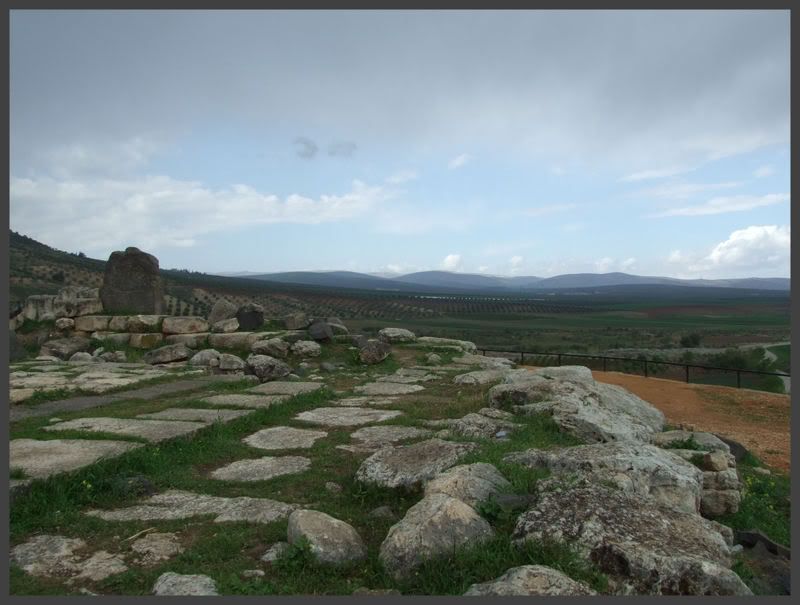
This is the end of our little taxi-ride.
Next time we take a bus to the second Syrian metropolis: Aleppo